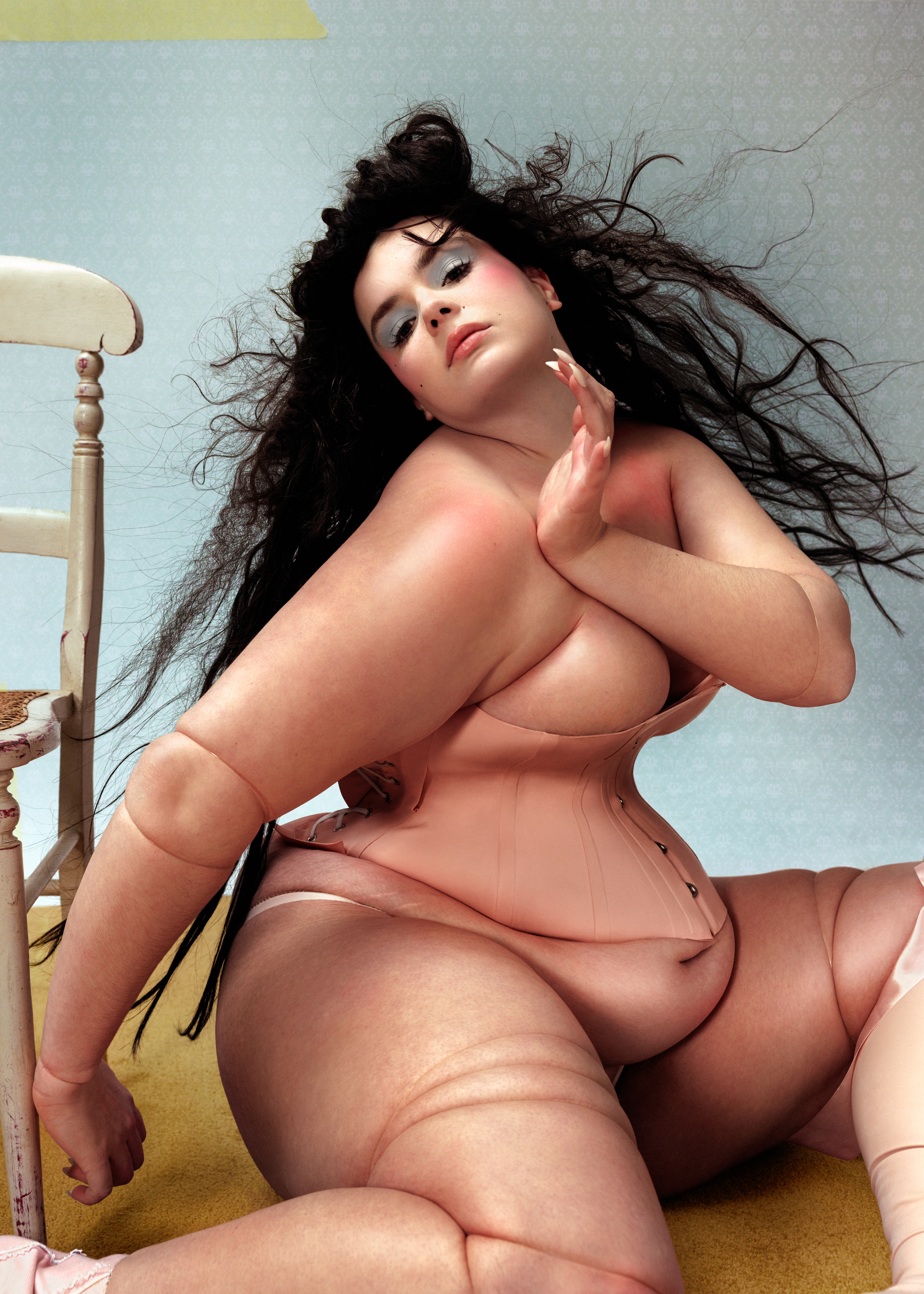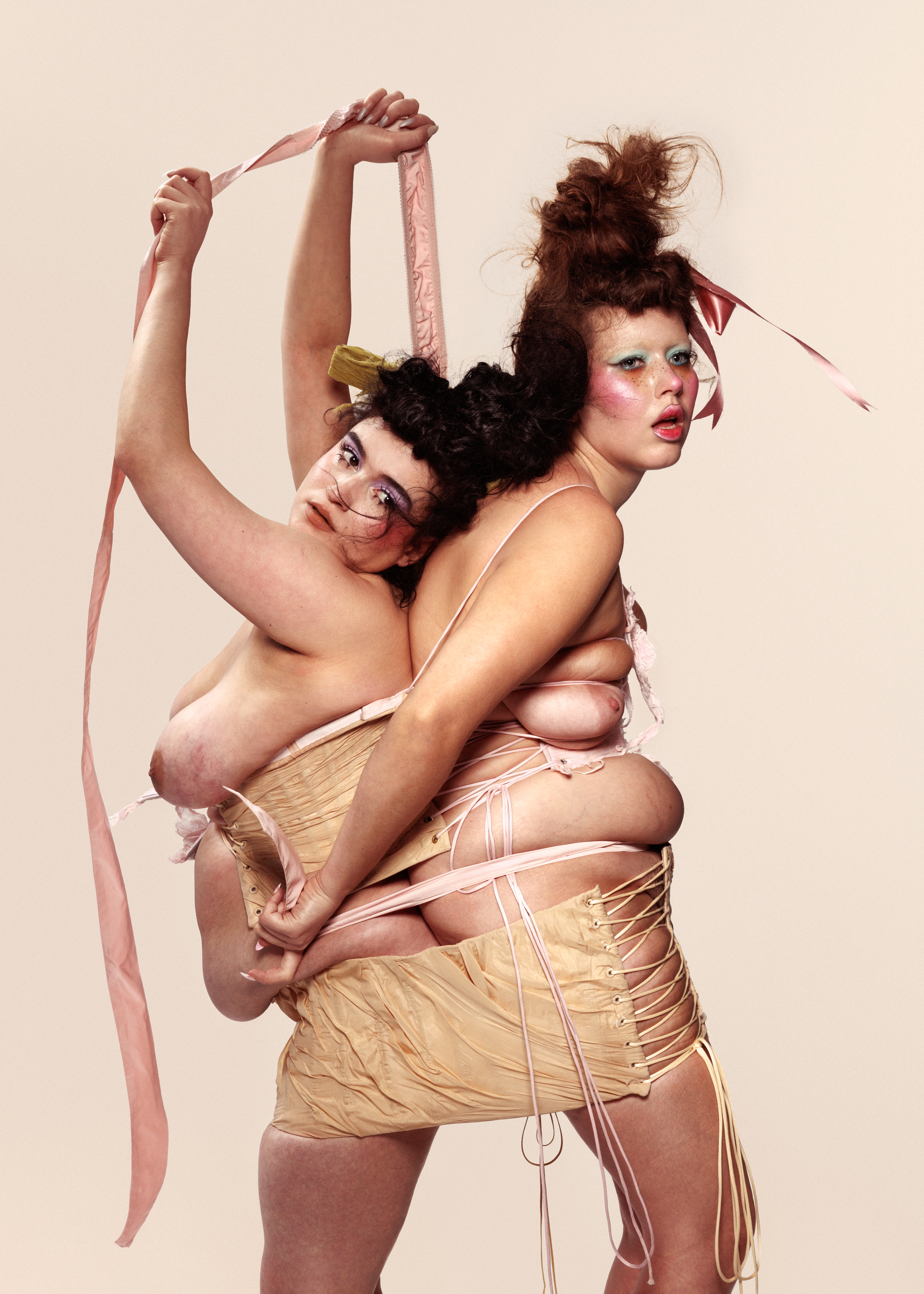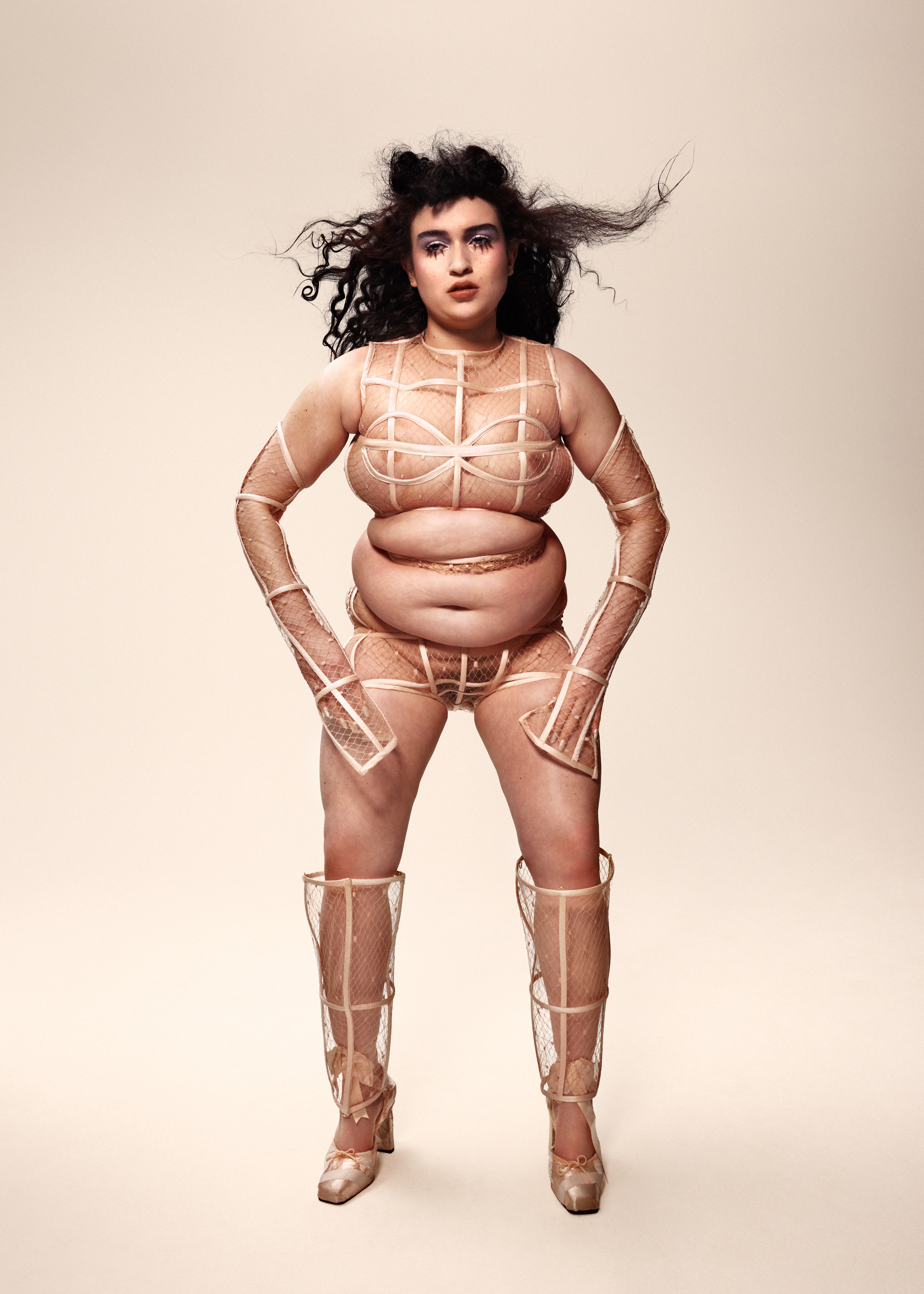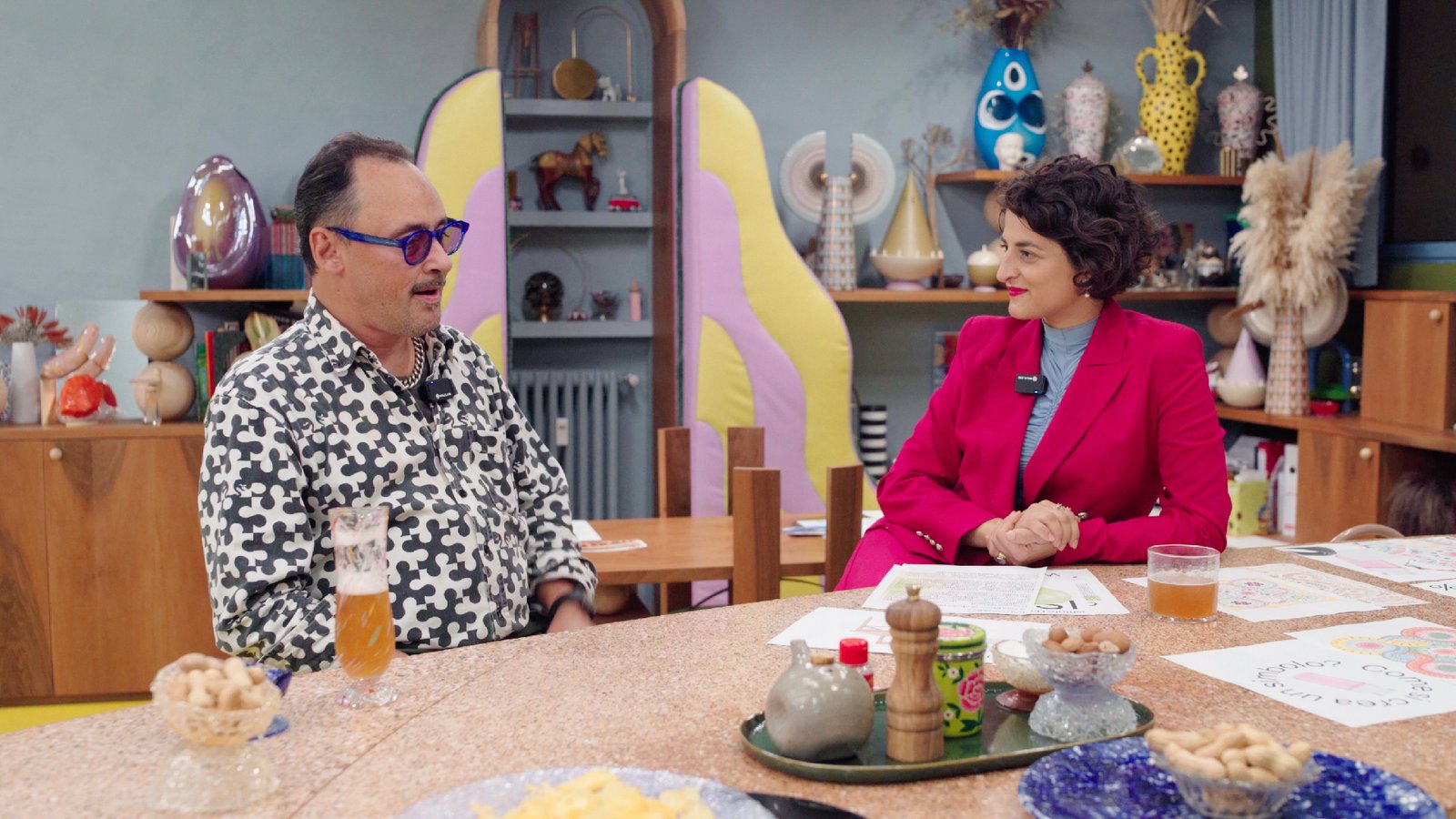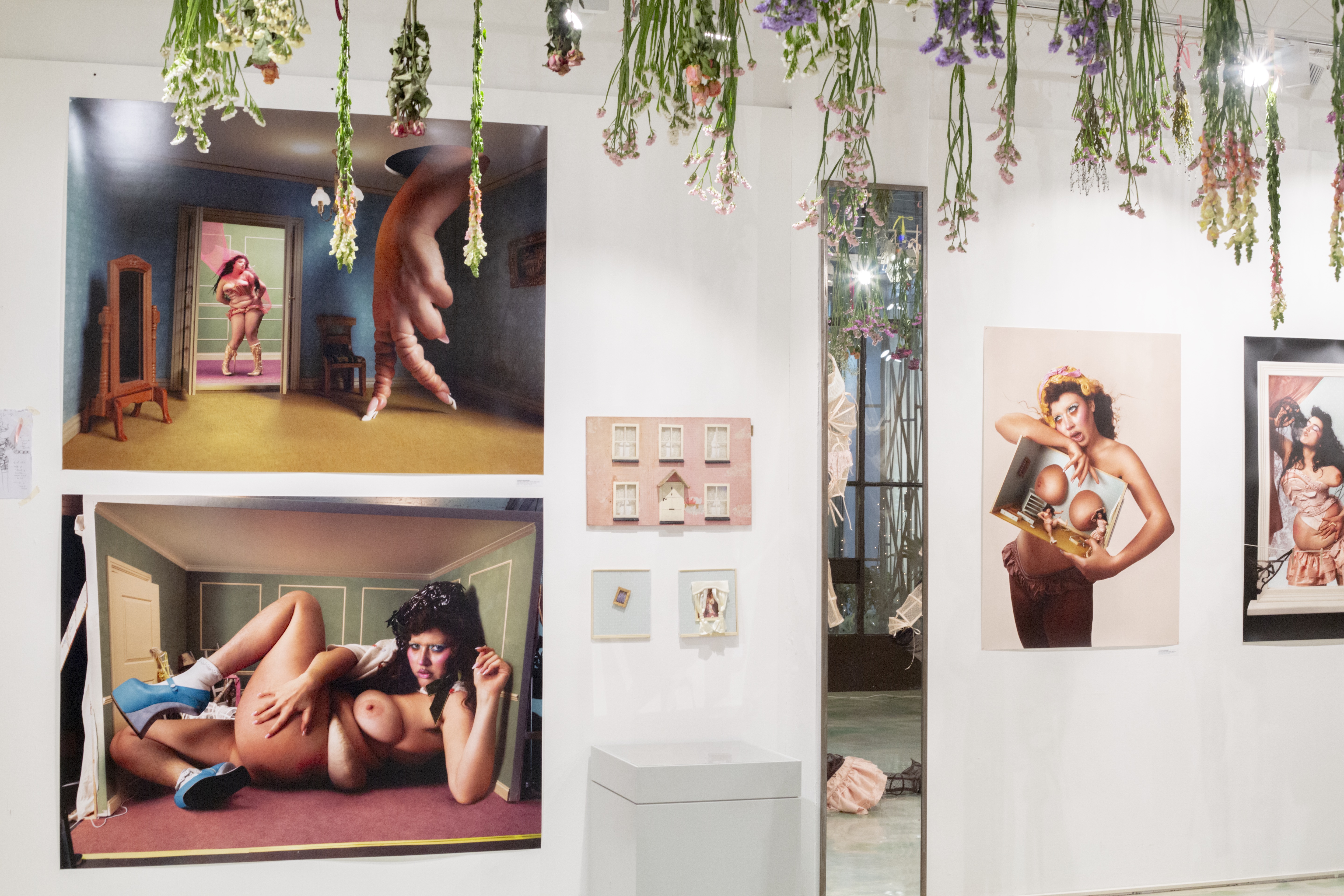
BEING BODY. Action and constraint in the art of Michaela Stark.
In early July, in one of the halls of the Tate in London, amidst numerous painted canvases depicting women in couture dresses, one could easily spot a figure sinuously moving within a wooden frame. Colorful chiffons gagged and held up the body. The robes clutched human flesh, which overflowed like any other very dense liquid in search of new space.

This was the performance of artist Michaela Stark, who, like a modern Venus, was panting and searching for a new dimension, within that very classical and elitist place. The drapes trapped her body and face, creating a parallel between that physicality and the movements of Veiled Truth, a work by Neapolitan sculptor Antonio Corradini.
"I design lingerie because it makes me feel free and uninhibited from my daily insecurities, because it shows off my body, emphasizes it, celebrates it and fetishizes it. I really spend a lot of time creating lingerie because it makes my body something to be desired."
Speaking is Michaela Stark, an Australian-born artist and fashion designer who now lives in London. Her main business is creating custom, one-of-a-kind women's underwear and haute couture garments designed to sculpt and disfigure the body.
Each piece Stark creates is custom-made, using haute couture techniques. She often resorts to delicate silks, hand-painted fabrics, and intricate embellishments. Each of her creations is designed to highlight the body shape of the wearer, whether she herself or a client.

«Most of the inspirations for my pieces come from the natural movements of the body, actually I like to film myself as I see my physique moving organically and fluidly, observing how it bounces, what happens when I squeeze, pull or tie it. What I want is to carry on a bodily experimentation to see what are the limits of my silhouette or forms.»
Fashion for Michaela Stark becomes a personal field of investigation, an organic and physical process of deconstructing traditional ideals of beauty and challenging social norms through clothes and accessories that are often accused of being the main causes of hardships and social issues related to the female body. Stark's performances and haute couture garments are created with the aim of expressing the necessary freedom that every individual should have even in the way they show themselves to others.
We live in a time when traditional canons of beauty are increasingly being challenged. This change also comes through artists such as Michaela Stark, whose work proposes a new vision of the female body that breaks out of the confines of social expectations. It is interesting to understand how her artistic approach can redefine what we consider “beautiful” and “acceptable”.
After her performance at the Tate in London, many images from that event circulated on social media, a massive spread that brought images of that body to the screens of many cell phones. This makes us realize that channels of expression such as Instagram have a significant impact on our critical sense, which, however, can be both positive and negative. On the one hand, they provide a platform for voices promoting body positivity and for artists who, like Stark, seek to change the narrative about beauty. On the other, they often perpetuate images of ideal bodies that can fuel insecurity and body dysmorphia. Perhaps the solution lies in a plurality of voices that try to show a variety of bodies and celebrate diversity.
After graduating from a fashion school in Australia, her career path began in London, where she began collaborating with small fashion brands. It was a period that Stark herself remembers as very exciting, and one that made her realize the endless opportunities in that field and the possibilities of mixing knowledge from other fields, creating something new: a hybrid research made of social studies, fashion, contemporary art and performance.
Over the years, she began working with world-renowned designers as a personal seamstress and costume designer, giving her important opportunities such as touring with Beyoncé and Jay Z and working with major fashion brands to design and make garments on a global scale.
Her creative process evolved hand in hand with her technical skills, producing increasingly complex pieces for different body types, not just models.
As is often the case, behind such an intense artistic journey there is always a personal experience that is transformed into a universal message. Michaela Stark has always had a deep love for lingerie. Wearing it, for her, has always meant fulfilling a fantasy and making her feel confident. However, because of her shape and build, she often felt excluded from the world of traditional lingerie. From age 14 to 19, the only place she could shop was an outlet called “Big Girls Don't Cry (Anymore),” the only one in town that sold her size. She recounts in various interviews that, as one can imagine, there were no special, delicate types of lingerie in such stores, and every shopping experience there was experienced as mortifying and frustrating. Hence the idea of creating something unique, something that would be useful for her and for those who had the same desires as her.
From lingerie we then move on to photos and performances. The images Stark creates are mostly self-shots, where the artist has full power and control over the situation. The image, and therefore the body, are portrayed with just the right amount of self-awareness, with the goal of conveying that same serenity and sense of security in the face of one's own “imperfections.”
Stark's images certainly do not go unnoticed. Her costumes have the ability to show, without objectifying, the physicality of women. Mixed feelings can be found in her works, starting precisely with the lingerie she wears for her works. The corset, for example, has always been the emblem of female constriction, and of being subjected to precise social dictates and customs. However, the power of Stark's research lies in transforming symbols like that into tools of freedom, elements and applications to free the body from canonical measures and highlight it in all its particularities.

This determination has led her to collaborate with the likes of Nick Knight, fashion designer Jean Paul Gaultier, and to create custom looks for female artists and musical artists such as those mentioned above and such as Sam Smith and Shygirl, as well as Victoria's Secret World Tour 23 models. In addition to all this, there are also collaborations with museums and cultural foundations. Not coincidentally, on the occasion of Milan Fashion Week 2024 and for the first time in Italy, Fondazione Sozzani presented Michaela Stark's Panty Show, an exhibition and performance event, enriched with photographs by Charlotte Rutherford, and focused on a transgressive mutation of the body. It all revolved around the concept of living dolls, living dolls that embody the aesthetic stereotypes of the female world. The event also marked the launch of Stark's new line, namely her lingerie brand Panty, which uses fabrics such as silk, tulle and lace, a project in which all the elements of her research are condensed.
In this article I have tried to introduce you to Michaela Stark, a contemporary artist, young, but already with a wide range of experience behind her. Just think that in 2023 Forbes also included her in the list of the “30 under 30” most promising in the field of art and culture. A recognition that highlights Stark's abilities. In an increasingly faltering art system, finding such examples is critical to showcasing new, winning possibilities of what it means to be an artist today. Stark is a creative who explores the intersection of art, fashion and performance, embodying the idea of a hybrid artist, able to move with agility between different fields and sectors. In her research she manages to synthesize these different disciplines, making her work unique and meaningful. She demonstrates that being an artist means not only developing one's own voice, but also having the ability to find collaborations and synergies with other fields, creating new expressive languages, and reflecting the complexities and nuances of contemporary society.
With Spaghetti Boost we share this multidisciplinary approach, as it represents - for us - a new way of making art, where “contamination” is not just an opportunity, but a necessity to respond to the challenges of our time.
Alessio Vigni, born in 1994. He designs, edits, writes and deals with contemporary art and culture.
He collaborates with important museums, art fairs and artistic organisations. As an independent curator, he works mainly with emerging artists. He recently curated “Warm waters” (Rome, 2025), “SNITCH Vol.2” (Verona, 2024) and the exhibition “Empathic Dialogues” (Milan, 2024). His curatorial practice explores the relationship between the human body and the social relationships of contemporary man.
He writes for several specialised magazines and is author of art catalogues and podcasts. For Psicografici Editore he is co-author of SNITCH. Dentro la trappola (Rome, 2023). Since 2024 he has been a member of the Advisory Board of (un)fair.
